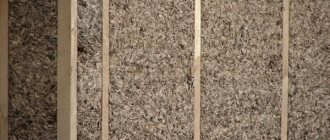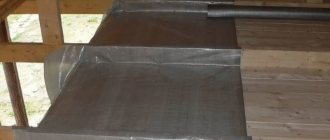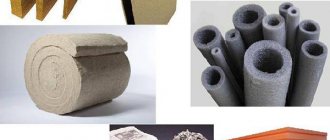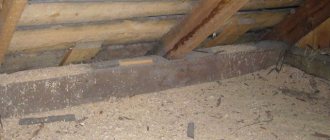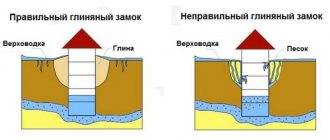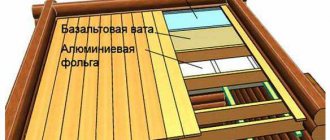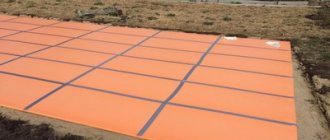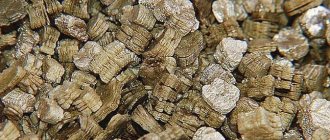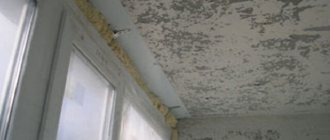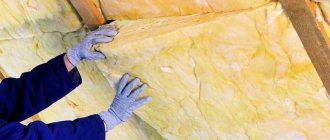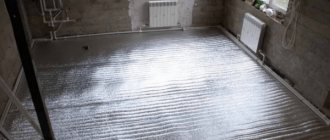What it is
A clay well lock is a layer of compacted clay that is placed along the concrete rings of a water shaft to prevent rain or waste water from entering. It is actually a water seal.
Advantages and disadvantages
The advantages include:
- Reliable and effective waterproofing material. It is not for nothing that at the depth where the clay layer lies, there is practically no groundwater.
- Very low cost.
- You can build it yourself.
- Simplicity of design.
- If constructed correctly, the structure will last a long time; it will not have to be repaired or maintained.
However, there are some disadvantages:
- The installation process is quite labor-intensive and long.
- Not every clay is suitable for the shutter.
- If it has not dried properly, then during frosts it will swell and cracks will form.
- If compacted poorly, the material tends to shrink, which will lead to the formation of a hole around the shaft.
How does a proper clay castle work?
The functioning of the lock is determined by the structure of the base material. Clay is a waterproofing agent. Consists of small particles in the form of flakes. Their size does not exceed 0.002 mm. The distance between them is no more than 0.005 mm. The dense structure swells when moistened and blocks the movement of water.
For the structure to work effectively, it is necessary to have well-pressed and compacted clay. When exposed, flat particles occupy a parallel position, and the pores become smaller.
It is useless to build a castle immediately after arranging the mine. Due to soil shrinkage, cavities will form under the structure, into which debris, rodents and contaminants can enter. An incorrect device makes the lock useless and also aggravates the process of untreated water entering the well.
When and why do you need such a device?
A clay castle around the well is needed if there is a risk of swampiness or an abundance of perched water on the land plot in the spring and autumn.
To prevent the aquifer from concrete rings from becoming clogged with soil and debris carried by rain, as well as the upper layers of groundwater, it is not enough to hermetically seal the seams between the rings. It is necessary to provide additional waterproofing.
Why does a well need a clay castle and is it needed at all?
A waterproof layer around the well is necessary if the area is swampy and there is an abundance of moisture in the off-season. A lock is necessary if surface water spoils the quality of the source.
The following signs indicate this:
- After prolonged rainfall, reinforced concrete rings located below the ground surface become wet.
- After rains, the water level in the well rises and it becomes cloudy.
- During heat treatment, an unpleasant odor emanates from the water.
The upper layers of groundwater contain impurities of fertilizers, dirt, and traces of animal activity. They can seep through the seams of the mine and enter the source. The main task of a clay castle is to protect the well from water that does not meet sanitary and hygienic standards.
Pawning a lock is not carried out in the following cases:
- On wells that have been in use for less than one year. Natural shrinkage of the soil near the walls takes from 1 to 2 years. Only after this can construction begin.
- Postponed when planning the pipeline from the well. The castle is built after the organization of communications.
- Not built on soils prone to heaving due to the risk of shaft deformation and displacement of joints.
There is no need to build a castle near wells in which peat, stone and sand are exposed behind the fertile layer.
How does a clay castle for a well work?
What clay is suitable
Not every one is suitable for the shutter. You need to select raw materials according to several parameters:
- It must be very fat.
- It cannot contain sand or lime.
- Looks like plasticine.
- If you rub it, there will be no grains of sand on your palms. The piece will remain a single mass.
The best way to check the composition of the raw material is to mold it into a ball and leave it in the sun to dry. The oily one will crack and become tough. The ball containing sand and impurities will remain unchanged, and grains of sand will shine on its surface.
How to improve
- Soak in water for several days. This measure will allow it to gain a sufficient amount of moisture and become more pliable for work.
- Soak in water, but leave it outside for the whole winter. After it sits in the cold and then thaws, the clay will become like real plasticine.
- Add slaked lime to the raw clay in a ratio of 20% to 100%.
Is it possible to use other materials instead of clay?
For a lock around a well, it is best to use clay
There are now a sufficient number of companies on the market that offer to replace clay with sand or a sand-gravel mixture. But, first of all, they want to simplify the task for themselves, and not to help you. Let's think logically. Sand does not retain water, but only allows it to pass through and clear away debris. Next, the water gets to the walls of the concrete rings and if there are cracks in them, then the flood water goes directly into the aquifer.
Now about clay - it is a waterproof material that prevents the penetration of water, but at the same time it can get wet on the surface, so in winter, with significant frosts, a slight movement of the well rings is possible. At the same time, clay prevents the penetration of surface water and soil moisture, which is fraught with serious consequences.
Despite the existing variety of different mixtures for well locks, they cannot replace clay.
How to do it yourself
After the well is installed, you can begin backfilling with soil. You can't bury it completely. It is necessary to leave the top two rings unburied, this is approximately 180 cm from the top level of the ground to the bottom of the castle. If the source is already buried, then you will have to dig a trench around it 180-200 cm deep and at least 20 cm wide.
Now you can start forming layers. The shutter is laid in stages, 20-30 cm at a time. Each layer is compacted with a special tool. It is not enough to simply trample it with your feet, as air will remain in it, which will then fill with water. For compaction, a homemade wedge-baba is used - this is a wide log approximately 150 cm in height and 25-30 cm in diameter with handles attached at the top.
The clay castle consists of two parts:
- The inner part is clay adjacent directly to the concrete ring, on the other side pressed by a soil dump.
- The outer (visible) part is located at ground level, rising 20-30 cm above the ground. Also, we must not forget about the slope from the well to the side. This is necessary so that water flows outside the castle during rain.
In areas with harsh climates and sudden temperature changes, the high moisture content of the valve may freeze, causing it to swell, crack, and begin to expand, pushing the shaft rings inside the barrel, displacing the joints.
Subsequently, no matter how sealed the source is, soil and high water will begin to penetrate into it, which, in turn, will lead to a deterioration in water quality. To prevent this from happening, you need to add a compression layer.
Compacting the clay correctly
To achieve the best effect, tampers with a small sole but with significant mass should be used
This process must be carried out in several stages, after each laying of 15-20 centimeters of clay. To achieve the best effect, you should use tampers with a small sole, but with a significant mass. There have been cases where it was precisely because of a poor-quality seal that everything had to be redone.
When preparing clay for arranging a castle, pay attention to its moisture content. It has been laboratory proven that clay is most plastic at a humidity of 15 to 30 percent.
An important point: after you have dug a well, you should not immediately equip a clay castle. The soil around the mine must stand and settle. Otherwise, you simply will not seal all the cracks in the ground, which makes the clay castle useless.
You can do all the work yourself, but the best option is to turn to specialists or at least get an assistant.
Groundwater repair and restoration
Sometimes, if installed incorrectly, as a result of long-term use, the valve becomes unusable, and dirty water begins to penetrate into the shaft.
If during the inspection it turns out that the water seal is not working, then it can be repaired. When the upper part of the lock has peeled off and a gap has appeared between the clay and the ring, as well as in the ground, it means that the well has shrunk, and you can get by with repairing the upper part. To do this, you need to dig out and remove the clay to a compacted area. Compact the layer again and add the required amount again. For repairs, it is better to use new clay, fatter than before.
If it is clear in the shaft that groundwater is flowing through the butt joints, then the entire castle must be repaired. Here you will have to do everything again. Completely remove the clay from the trench and fill it with new clay. Of course, you can try to use the old one, but in this case it needs to be thoroughly processed (soaked in water, mixed with slaked lime).
What is a blind area: what types are there?
After installing the water seal, the issue of draining storm water from the mine shaft remains open.
A blind area is a structure around a well, equipped with a slope from the ring to the side. It comes in hard and soft material.
Solid:
- clay;
- concrete.
Soft:
- special waterproofing film;
- bikrost, roofing felt;
- high density polyethylene film.
Pros and cons of soft and hard
There is a fundamental difference between soft and hard. The second one looks like a slab, the first one, on the contrary, is not visible at all.
Concrete and clay have a structure that can swell when frozen.
Soft, on the contrary, does not deform.
Also, when the earth shrinks around the well, the solid blind area will not sag, and a gap will form between the concrete and the ground, which will not be immediately visible. Over time, water and soil will get into it. If a ring gets into the barrel, it can ruin the quality of the water.
Sinterability and fire resistance
Sintering is the property of clay to transform into a plastic state when heated without access to air. Fire resistance is a characteristic that shows the ability of a material to withstand high temperatures without melting. We combine these properties because, by and large, they both show the same thing - the reaction of clay to high temperatures.
This characteristic is actually very important for clay soils. After all, clay is widely used in the production of other building materials (for example, expanded clay, bricks, tiles, tiles), as well as dishes and ceramic products.
That is why all clays are divided into:
- Low-melting (melting point up to 1,350°C)
- Highly refractory (from 1,350°C)
In rare cases, some species melt only at temperatures above 2000°C. Then additional elements are specially introduced into the material to reduce this indicator.
At high temperatures, chemical processes occur in clay, due to which its composition changes, hence the condition of the material changes. As a result, the clay becomes as hard as stone.
Interestingly, if the clay dries on its own, without exposing it to high temperatures, it will also become hard. The difference here is that naturally dried clay crumbles very much even from slight physical pressure on it in your hands. But after firing, clay becomes very strong, which is almost impossible to destroy with your hands. As an example, try breaking a brick block with your hands. You are unlikely to succeed.
Tips for use
- It is not advisable to equip them immediately after installing the well. It is better to let the soil settle for a year or more.
- When installing a soft blind area, it is better to use special waterproofing films.
- It is better to make a castle and blind area in late spring, when there are no longer frosts and the soil is still filled with water. In addition, during the spring and summer it will be clear whether the work was carried out correctly and whether it copes with water.
- The slope angle for a solid blind area is 2-5 degrees. For soft - 5-10.
- To install a concrete blind area, it is better to assemble wooden or metal formwork, and not just pour raw materials into a dug ditch. This will help give shape and neatness to the final product.
- After arranging the concrete blind area, you can build any decorative structure on the surface, for example, a gazebo with a roof.
